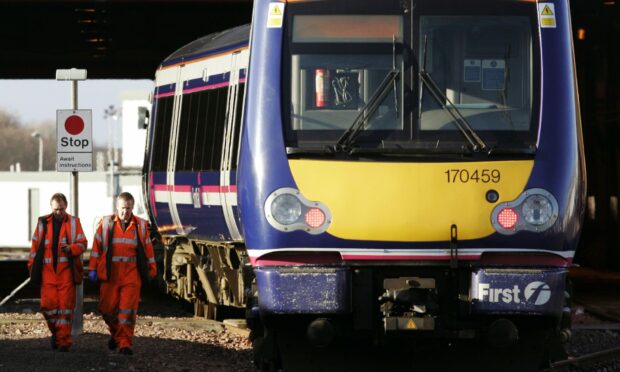Investigators have found that six trains travelled at more than double the speed restriction on the line where the Stonehaven derailment left three people dead.
On December 4, 2020 a reduced speed limit was in temporary force between Laurencekirk and Portlethen.
A 40mph “blanket” emergency speed restriction (BESR) had been imposed at 9am because heavy rain was forecasted for that day and there was an increased risk of landslips.
The Rail Accident Investigation Branch (RAIB) found that some trains were travelling through the BESR at the normal maximum permitted speeds of up to 100mph. In other instances, some trains only exceeded the speed restriction for parts of the BESR.
However, the rainfall was not as heavy as expected and no landslips were recorded.
On August 12 2020, a landslip caused a ScotRail train to leave the tracks at Carmont, just south of Stonehaven.
Driver Brett McCullough, conductor Donald Dinnie and passenger Christopher Stuchbury died when the 06:38 Aberdeen to Glasgow Queen Street train derailed last year.
The interim report by RAIB found that the train was travelling at 72.8mph, the normal range for the line, which the driver was told was safe to do.
However, the final report is in the end stages and has been delayed until 2022.
‘Fortunate that the weather was not as bad as feared’
RAIB found that some drivers were unaware of the BESR as they approached it, while others were unaware of its exact extent.
The only information provided to the drivers was a notice displayed in the late notice cases at the locations where they reported for duty. However, it has been found that the notice did not clearly explain the information in a way that could be readily understood and remembered by drivers.
Lineside signage is not used for BESRs and no other reminder was provided to the drivers as they approached the restriction.
According to the report, ScotRail had not recognised that the use of the late notice case was an unreliable way to implement BESRs.
Simon French, chief inspector of rail accidents, said: “The railway industry has more work to do to establish a suitable method for the imposition of speed restrictions which are needed in response to extreme weather that has the potential to endanger infrastructure.
“In this case the industry’s processes were ineffective, and it is fortunate that the weather was not as bad as feared and that no accident occurred.”
